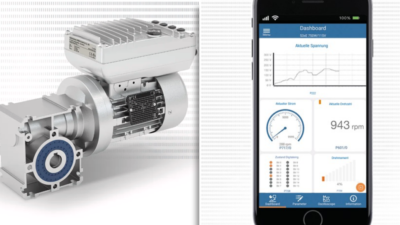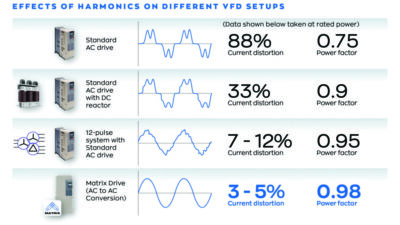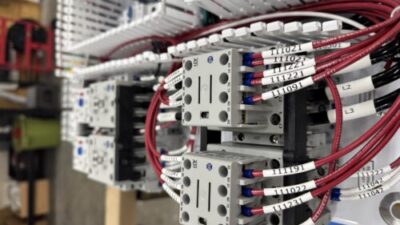For more on each of these recently posted articles, go to www.controleng.com.
At Control Engineering Online, readers can also access and register for 10 topical monthly e-newsletters; read “Today’s News” each business day and fresh products weekly; explore 10 channels, show coverage; search the site; and more at www.controleng.com. Specific areas/services also include:
-
Tutorials at www.controleng.com/tutorials ;
-
Subscriptions/renewals at www.controleng.com/subscribe ;
-
Free Info Service at www.controleng.com/freeinfo ;
-
Automation Integrator Guide at www.controleng.com/integrators ;
-
Buyer’s Guide by product group, category, location, keywords at www.controleng.com/buyersguide ;
-
Control Engineering Europe at www.controleng.com/europe ; and
-
Editorial calendar, contacts and marketing opportunities at www.controleng.com/mediainfo
Readers value what Control Engineering’ s editors deliver online. Average unique monthly visits increased from 21,900 in 1999 to 51,100 in 2000 to 83,100 in 2001.
Spin lathe CNC upgrade helps rim maker
To reduce downtime on its spin lathes, the Specialty Rim Supply (SRS) division of Specialty Blanks Inc. (SBI, Terre Haute, Ind.) recently set out to improve the repeatability of its CNC control program.
The team implemented Hess Engineering’s solution, which included Rockwell Automation’s Allen-Bradley 9/Series CNC controller and Rexroth’s servo-valves and valve controls. The 9/Series uses industry-standard G-code, which SBI reports is easy to learn and can be supported by many CAM programs. The company also selected Shop Systems ShopCAM software, which was adapted by SRS plant engineer Jana Nees to four-axis spinning; used to quickly develop rim profile CNC programs, without direct G-code modifications. This reduced SRS setup time by 25% and cut associated scrap by 85%.
For more information, visit SBI at www.ormet.com ; or visit Rockwell Automation at www.rockwellautomation.com .
Vision sensors enable seat recliner assembly
To build an assembly line for its new power seat recliner, Porter Engineered Products (Westfield, Ind.) determined that it needed vision inspection. Rich Oliver, Porter’s manufacturing engineer, says. The line includes automatic and hand assembly operations, as well as a soundproof chamber for noise level testing. Mr. Oliver eventually designed and implemented an assembly line that includes four programmable controllers, seven vision sensors from DVT (Norcross, Ga.), three industrial computers, and several networks, including Ethernet, DeviceNet, RS-232, and Remote I/O.
To allow examination of the entire part, he mounted and coordinated cameras on servo-controlled arms above and below the line, and then generated information to a database via Ethernet. Mr. Oliver says he selected DVT’s sensors for their PC-based set up, but also because DVT agreed to develop an interface for supporting Rockwell Automation’s Ethernet/IP protocol. Up and running for several months, Porter’s new assembly line recently increased output due to the success of its new recliner device.
For more information, visit www.dvtsensors.com , for Porter Engineered Products visit www.porteres.com . [Also see this issue’s cover story for more on vision systems.]
Gary Mintchell, senior editor, [email protected]
VFDs reduce energy use by office tower’s large-HP chillers
A recent retrofit of two 1,000-ton chillers with variable-frequency drives (VFDs) at San Diego’s 34-story One America Plaza is helping engineers at the 506-ft office tower use energy more efficiently, and cope more easily with California’s deregulated and skyrocketing electricity prices.
The chillers previously consumed 50% of the building’s total energy draw. Without the ability to turn the speed and horsepower of the compressors up or down to parallel variances in outside temperature, the chillers formerly ran at a constant, often excessive, speed. This wasted a lot of electricity, which now averages 30 cents per kW hour, compared to 9 cents per kW hour in early 2000.
“Motor drives make it possible to operate compressor pump motors at the speed needed for the capacity required,” says Mike McMahan, senior engineer for Control Technology (Vista, Calif.), a system integrator that installed two new 1,000-hp ACS 600 series VFDs from ABB Inc. (New Berlin, Wis.). Thanks to the efficiency delivered by ABB’s drives—not to mention California’s deregulated and accelerating electricity costs—estimated payback for the two drives has already decreased from 2.5 years to 1.5 years, and continues to decline as energy costs increase.
For more information visit www.abb-drives.com .
Jim Montague, news editor, [email protected]



